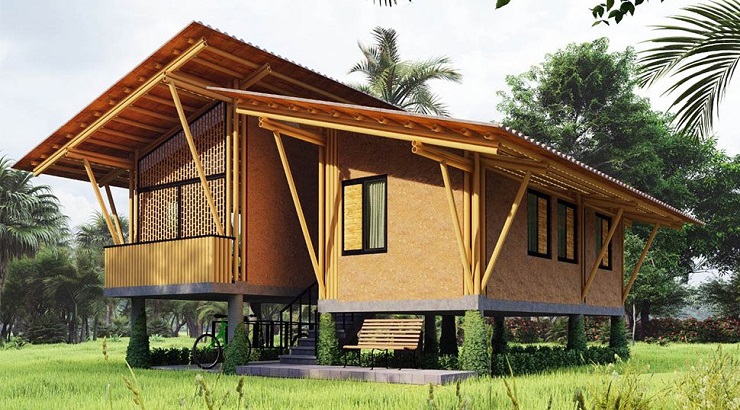Green Building
How to Build With Bamboo
Bamboo is extensively used for construction of walls and partitions.

Bamboo is becoming increasingly popular as a construction material due to its affordability compared to the high cost of steel.
Its cost, along with strength, sustainability, and versatility, has made it an attractive alternative in various construction applications.
The use of bamboo construction is applied by the method of structural framing, which is very similar in most respects to conventional timber frame design and construction.
When using bamboo, the floor, walls, and roof are all interlinked, relying on each other for overall stability.
Construction methods using bamboo
Following are some of the modern methods of construction using this material.
1. Bamboo for foundations
In recent times, much research in the area of bamboo construction has involved innovative experiments using it in foundation systems.
Even though bamboo is not conventionally used as steel reinforcement in foundations because of its structural properties compared to steel, it is prone to decay when in contact with moisture.
The problem, however, is partially solved by treating bamboo with special chemicals to enhance its durability and strength – allowing its use as a form of reinforcement in foundations of low-rise and non-conventional structures.
Bamboos are used in various shapes and forms to build a foundation.
2. Bamboo for walls construction
Thanks to its strong, flexible, and eco-friendly nature, bamboo is often used to build walls and partitions where the plant is available at ease in a region.
The techniques for wall construction include structural frameworks like cladding. In such cases, similar to that of the foundations, the bamboo material is treated to enhance durability, usability, and fire resistance.
3. Bamboo as a roofing material
The inherent strengths, flexibility, and light weight of bamboo make it a fit material for roofing.
The bamboo roofing techniques are either in primary forms of bamboo material or in composite forms that give it resiliency against the weather elements.
RELATED: Unlocking Steel’s Key Benefits for Construction Projects
Treatments can be added to the material to increase its usability, durability, and, apart from fire resistance, which allows for its broad application as roofing, oftentimes limited by scalability issues and standardization and regional building codes.
4. Bamboo for scaffolding
With tensile strength reaching as high as 28,000 psi, and higher for others, it could withstand heavy weights without breaking despite this lightweight material.
Indeed, bamboo has become a highly recommended scaffolding material, even for tall buildings.
In building scaffolding, cane extensions are achieved by tying many ropes through cane ends. Strategically, these ties position the nodes within the lashings that are snuggly fitted under the vertical downward forces.
This method provides one of the significant advantages whereby it allows any misaligned joints to be realigned back to their accurate angle when necessary.
Advantages of bamboo construction
– Strength: Bamboo has high tensile strength due to axially running fibers.
– Fire resistance: Because of the high value of silicate acid and water in bamboo, it may resist temperatures up to 4000o C.
– Lightweight: The bamboos have relatively low weight hence they can easily be displaced or installed.
– Safety: Compared to other building materials like cement or asbestos, bamboo does not pose a danger to health and the environment.
– Costs: Bamboo is cheap and easy to use.
Disadvantages of bamboo construction
– Shrinkage: Compared to timber, shrinkage is more in the case of bamboo, particularly when the bamboo loses water.
– Jointing: Though many jointing methods are available, the structural integrity of the bamboo is yet to be ascertained.
– Durability: Durability and resistance of bamboo is yet a problem from insect or fungus attack; hence needs treatment before it is used for construction purposes.
In light of the above facts, it cannot be said that bamboo will completely substitute steel.
Indeed, more than a century later, cement-based concrete is still the most used construction material in the world. As noted in Future Cities Laboratory, almost 90% of the world’s cement and 80% of its steel are used by developing nations.














